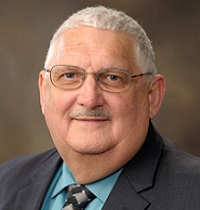 By Mike Sutter, Chief Innovation Officer, Carle Health System (@Carle_org)
By Mike Sutter, Chief Innovation Officer, Carle Health System (@Carle_org)
As the chief innovation officer of Carle Foundation Hospital, my primary responsibility is to find the best cutting-edge technology to help alleviate our physicians’ biggest pain points. This can seem like a daunting task considering the sheer quantity of technologies being produced by innovative vendors to improve the healthcare industry. I often get asked to define the ‘magic’ behind making the right decision. Ultimately, you simply have to start somewhere. With the trust of leadership and the direct involvement of our system’s physicians, I’ve determined my own process to cut through the noise and find success.
- Discovery Period – It is critical to spend time learning about new technologies in development. Reading about new breakthroughs and launches provides a sense of the potential options out there. Mapping these new options with your physicians’ needs provides a starting point to cut through the clutter and focus on the real possibilities.
- Prototype – If the device seems like a good fit, try to get a prototype. Vendors are often open to partnering with you to offer a trial period so you can see how the technology works for your system. During this test period, the chief innovation officer and chief medical information officer should play around with it, to see if it has any potential for your health system.
- Proof of Concept – If the product passes the first test, it is important to get input from a physician who was involved in identifying the issue that this technology can fix. Giving that individual time to try out the device offers real-world input and gives context for potential adoption.
- Pilot – First and foremost, establish clear objectives and outcomes. Know exactly what you are trying to solve with this solution and what you need it to do. Then roll it out to your physicians as a pilot and make sure to get feedback.
- Evaluate – Based on the results of your pilot, weigh the costs versus the benefits. In addition to regular dollar ROIs, soft ROIs such as improved patient experience, provider efficiency and staff efficiency are important to factor in. For example, improvements in physician efficiency may allow the physician to see more patients per day. Likewise, if the device improves staff efficiency, you may not have to hire additional staff members. Any clear goals from the pilot should be measured carefully in your evaluation.
- Expanded Pilot vs. Enterprise Rollout – Based on the information collected and observed from the previous steps, decide whether you should consider an extended pilot or an entire enterprise rollout. For an extended pilot you may lengthen the time to include more participants from the same department or to evaluate other criteria; other times you may expand the pilot to other areas of the hospital. From there, decide if you should do an enterprise rollout with the device or if it is best suited for your pilot area.
Technology is evolving at a rapid pace, so it’s important that health systems keep up and adopt the most beneficial devices for their physicians and patients. Don’t lose sight of what your physicians are asking for, and compare your research and observations with their needs every step of the way. Adopting these steps while simultaneously having the support of your health system, from board members down to physicians, can help you improve not only your clinical workflow, but also reach the ultimate goal of providing the best patient care possible.
This article was originally published on Mobile Health Matters and is republished here with permission.
